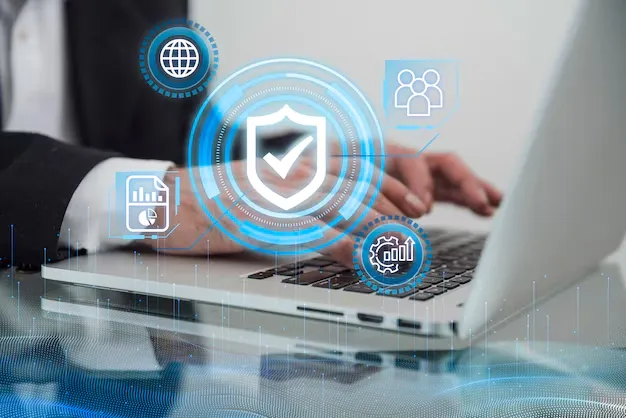As the demand for online learning continues to soar, the need for secure, reliable Learning Management Systems (LMS) has never been more critical. LMS platforms are not just tools for delivering content, they house valuable data, including personal information, payment details, and academic progress. With this wealth of information comes the responsibility of ensuring its protection.
In this pillar post, we’ll delve into the essential security and privacy practices every LMS website should adopt to safeguard learner data, protect payment information, and maintain a safe learning environment. Whether you’re managing a corporate training program, an academic institution, or an independent course platform, understanding and implementing strong security measures is paramount.

The Importance of Security in E-Learning Platforms
In the digital age, e-learning platforms are prime targets for cyberattacks. Hackers may seek to steal sensitive personal information, commit fraud, or even disrupt the learning process. On top of that, data privacy regulations, such as GDPR, require strict compliance to ensure the safety of user information.
For LMS platforms, prioritizing security isn’t just about protecting your users—it’s about earning and maintaining trust. A breach in security can have serious repercussions, ranging from reputational damage to legal consequences. Therefore, it’s essential to implement best practices that ensure the protection of all learners and their data.

1. Protecting Learner Data
GDPR Compliance and How to Ensure Data Privacy
The General Data Protection Regulation (GDPR) is one of the most stringent privacy laws in the world. For LMS websites that handle data from users in the European Union, compliance with GDPR is mandatory. But even if you’re operating outside the EU, adhering to data privacy best practices is important for fostering trust.
To ensure GDPR compliance, your LMS platform must meet the following requirements:
- Data Collection Transparency: Clearly explain what data you collect and why. Include consent forms for learners to opt-in to share their information.
- Data Minimization: Only collect the data necessary for the platform’s functionality. Avoid asking for excessive or unnecessary details.
- Right to Access and Deletion: Give learners the right to access their data and request deletion when necessary.
- Data Protection: Implement appropriate measures to secure stored data, including encryption and regular backups.
Secure Login and Authentication Systems (OAuth, SSO)
Another key aspect of protecting learner data is secure authentication systems. Traditional usernames and passwords are vulnerable to cyberattacks, but secure login protocols can drastically reduce the risk.
- OAuth (Open Authentication): OAuth allows users to log in using their existing credentials from trusted services like Google, Facebook, or LinkedIn. This eliminates the need for users to create and remember additional passwords while enhancing security.
- SSO (Single Sign-On): With SSO, learners can access multiple courses or resources within the same platform without needing to log in repeatedly. This simplifies the user experience while providing secure, centralized authentication.
Implementing these systems ensures that learner data is protected from unauthorized access, reducing the likelihood of security breaches.
2. Payment Security
How to Protect Payment Data on Your LMS Platform
When running an LMS platform, especially one that involves paid courses or subscriptions, ensuring the security of payment data is crucial. Payment processing involves sensitive financial details, making it a prime target for cybercriminals. Securing this data should be a top priority for any LMS.
- PCI Compliance: Payment Card Industry Data Security Standards (PCI DSS) ensure that any platform accepting payments follows the necessary guidelines to protect cardholder data. Adhering to these standards is essential for avoiding fines and maintaining payment security.
- Third-Party Payment Gateways: Instead of processing payments directly on your LMS, consider integrating trusted third-party payment gateways (like Stripe, PayPal, or Square). These services handle payment processing securely and help you avoid storing sensitive financial data on your servers.
SSL Certificates and Encryption
One of the most basic yet essential security measures is encrypting data with Secure Socket Layer (SSL) certificates. SSL ensures that any data transferred between the learner’s browser and your server is encrypted, preventing interception by malicious actors. When a site has SSL encryption, it will display a padlock symbol in the browser’s address bar and use HTTPS in the URL.
SSL certificates protect both user information and payment data, offering another layer of security to the LMS platform. If you haven’t already, make sure your LMS is equipped with an SSL certificate before accepting payments or collecting personal details.
3. User Access Control
Setting User Roles (Admin, Instructor, Learner)
User roles and permissions are crucial for controlling who has access to what on your LMS. Defining clear access levels for administrators, instructors, and learners helps prevent unauthorized access to sensitive content or personal data.
- Admin Role: Typically, admins have full access to the backend of the LMS, allowing them to manage courses, users, and site settings. Limiting access to this role is crucial to prevent data tampering.
- Instructor Role: Instructors should only have access to the courses and student data they are responsible for. Ensure that they can’t access sensitive information from other instructors or learners.
- Learner Role: Learners should only have access to their own courses, grades, and assignments, with no access to the platform’s administrative features or other users’ data.
Regularly review and update these user roles to ensure that individuals only have access to the necessary resources and data for their roles.
Controlling Access to Courses and Resources
Sometimes, you’ll want to restrict access to specific courses or resources based on criteria like user enrollment or payment status. This can help ensure that only authorized users access premium content or advanced courses.
- Course Prerequisites: Set prerequisites that learners must complete before gaining access to advanced modules or specialized courses.
- Paid Content: Lock premium or paid content behind a paywall or subscription plan, ensuring that only users who have completed necessary payments can access the content.
By controlling access in this manner, you protect your intellectual property while ensuring a secure and personalized learning experience for each learner.
4. Regular Security Audits
Why Regular Audits Are Necessary
A single vulnerability can compromise an entire LMS platform, and hackers are constantly evolving their tactics. Therefore, conducting regular security audits is essential to ensure that your LMS platform remains secure over time. These audits help identify weak points in your system before they can be exploited.
Security audits should check the following areas:
- Vulnerabilities: Look for outdated software, weak encryption, and other potential vulnerabilities.
- Permissions: Ensure that user roles and permissions are set correctly, and there are no unauthorized access points.
- Compliance: Make sure your LMS adheres to data protection laws, like GDPR or CCPA, and that it is continuously updated to meet new requirements.
How to Implement a Continuous Security Strategy
Security isn’t a one-time task—it requires ongoing vigilance. Implement a continuous security strategy by:
- Monitoring: Use security monitoring tools to track any unusual activity or access patterns on the LMS.
- Updating: Regularly update software, plugins, and server configurations to keep security measures up-to-date.
- Training: Educate your team members on security best practices to ensure everyone involved in the LMS platform understands the importance of data protection.
By continuously monitoring, updating, and auditing your platform, you can stay ahead of security threats and maintain a safe learning environment for all users.
Key Takeaways
When it comes to LMS website security and privacy, there is no room for compromise. By focusing on protecting learner data, securing payment transactions, managing user access, and conducting regular audits, you can ensure that your LMS platform remains a trusted and safe space for both learners and instructors.
Security should be an ongoing priority, not an afterthought. By adhering to best practices, you will not only comply with regulations but also build a reputation for reliability and trustworthiness in the e-learning community.
- GDPR compliance and secure authentication methods protect learner data.
- Payment security is ensured through PCI compliance and SSL certificates.
- User access control prevents unauthorized data access through defined roles.
Regular security audits and continuous monitoring help keep the platform secure.
